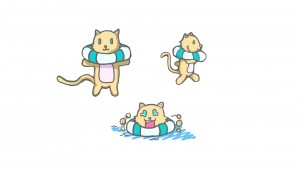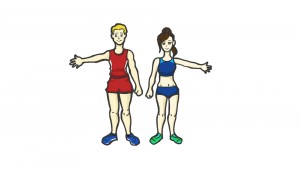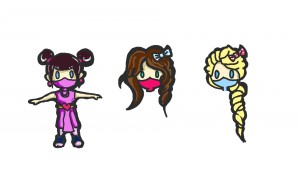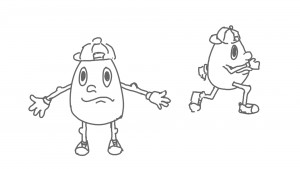Reasonable Suspicion:
We started out week 6 by presenting our modified game design to our client. They seemed apprehensive of our idea, as it only integrated a limited number of track & field events, and particularly disliked our decision to theme the game around ninjas, as it would be difficult to integrate the athletes that they sponsor into the game. We took this into consideration and began to revise our designs once again. We still believed that the Temple Run concept had potential, but the clients concerns about the limited number of activities was something that we had to seriously consider. We came up with another design based around track & field mini games spaced out with running, to make the game seem more like a decathlon event. We did a SWOT analysis of these ideas and decided that either would take at least 3 weeks in order to be feature complete. With halves in 4 weeks we considered such a route to be risky, particularly if our clients asked us to pivot our designs again.
A Challenger Appears:
With our apprehensions about our current designs, we spent Tuesday morning coming up with a new design that could cover the concerns of the client and still be developed in a shorter time than our current design. We came across the concept of obstacle courses, and in particular the show Wipeout, which makes use of ridiculous obstacles and water pits to make their courses entertaining. We decided that we could take a concept like Wipeout and theme it around track & field, so we could fit in a large number of different track and field activities. We felt good about this new idea, but we still wanted to get faculty input on all three to ensure that we were headed in the right direction.
Survival of the Fittest:
Throughout the day on Tuesday we had 3 different faculty meetings with Dave, John, and Mike. Dave was immediately apprehensive of the Temple Run and mini game ideas, as he didn’t see where our entertainment value was coming from. He also disagreed with our estimations of replay ability, and challenged us to consider what is motivating the player to put physical effort into a digital game. John felt that the Temple Run and mini game ideas were feasible, but we would have to massively redesign them, because, like Dave, he could not see where the player was being rewarded for their physical activity. When we mentioned the obstacle course concept to John, he was instantly more interested that he was in our other ideas, and commented that one method of motivation would be to allow players to build their own courses, and use the course elements as unlockable content. This completely changed our perspective on the obstacle course concept, and made us realize that it had far more potential than we had initially credited it. Mike put the last nail in the coffin on Temple Run and mini games when we mentioned our obstacle course idea, and the potential to add in level creation. He thought the idea had the ability to give the players the ability to challenge each other through their own levels, and was very flexible for live events, as custom tracks could be easily made for each live event. He recommended that we work our best to get a prototype up and running to show the clients, or at worst make use of our playtest on Friday to get direct feedback from students as to which model they preferred.
Nose to the Grindstone:
We all worked well into the night on Tuesday working on a new 3D prototype with the basic obstacles that we wanted to include on the courses and completed the working prototype for Wednesday morning. We developed all new 3D assets to support the obstacles, and redesigned our input system to work within a 3D space. On Wednesday we met with our faculty mentors and they were impressed with how rapidly we had scrapped and rebuilt our entire project. They liked the direction that we had chosen to go in, and supported our decision to use the playtest on Friday to affirm that our demographic would engage with the game. We spent the remainder of Wednesday and Thursday developing character concept art, level designs, and mechanic refinements.
Playtesting:
On Friday we went to Winchester Thurston’s Upper School, which is where their older students take classes. Winchester Thurston makes use of free periods, so we went to the school during the 9th graders free period. Adam Nye met us in the lobby and walked around with us to recruit students to try our game, as a result of this we were able to talk with the majority of the 9th graders who were in the building. We tested with most of the 9th graders that we found and then presented them with a survey following their play through. A majority of their feedback was positive about the game itself and the physical aspect of the game, but the students pointed out some major issues in our level design that we had not yet noticed. When we asked the students to look at the concept character art, almost all of the students picked the cat character set, while some others picked the realistic and goofy character sets. We left Winchester Thurston with strong level design and mechanic refinements in mind, which we proceeded to develop on over the weekend.




